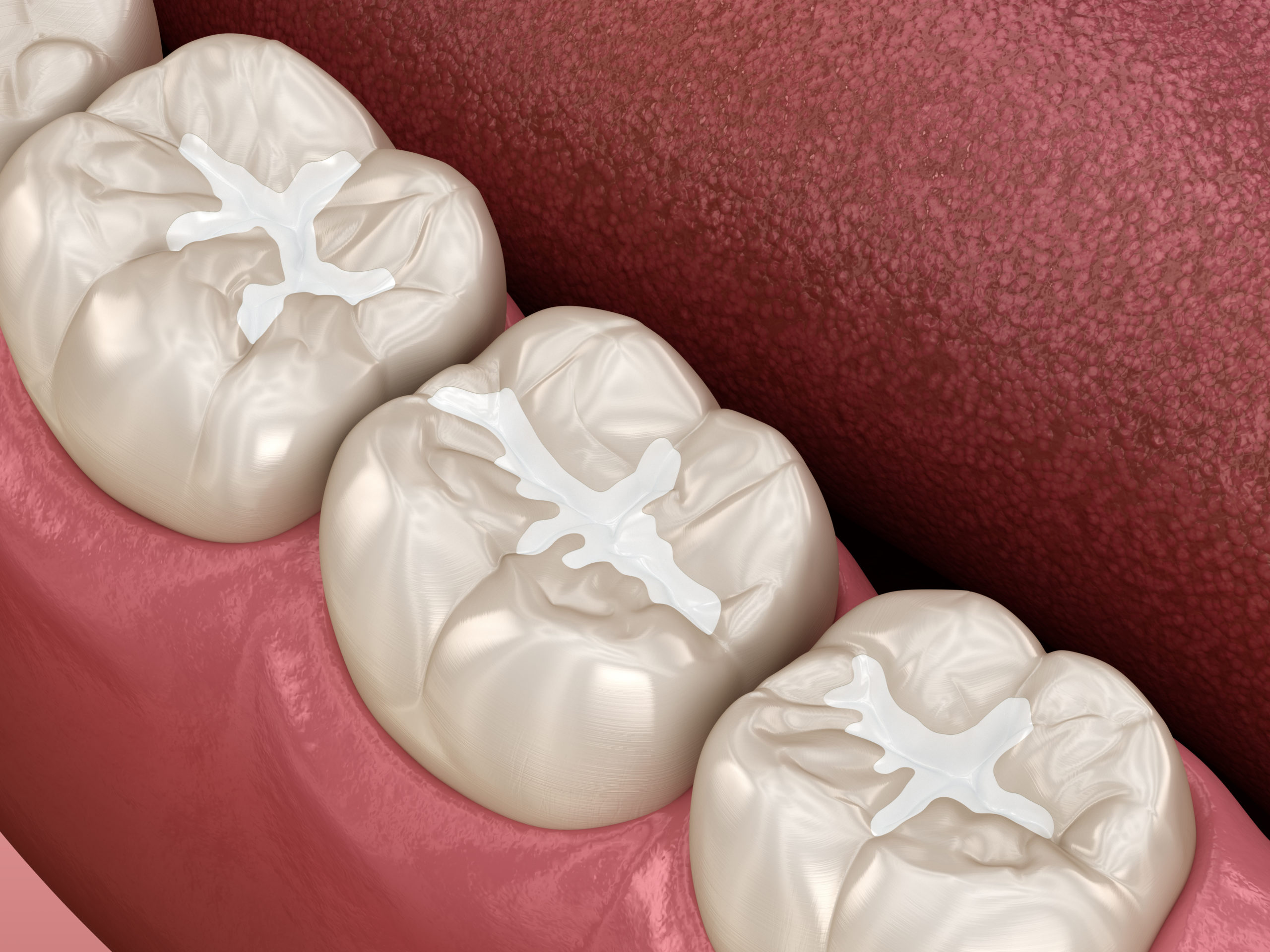Having a healthy dental routine can do wonders. By simply brushing your teeth twice a day and flossing once a day, you can protect your teeth against tooth decay and other dental problems. However, brushing and flossing may not be as effective on hard to reach areas such as your molars. Molars are the flat teeth located at the rear of the mouth and are used for crushing and grinding food. Because they are at the back, it is difficult to brush and floss them properly.
Because molars are important for grinding your food, they are also a common place for leftover food particles to gather and for bacteria to hide. This is the reason why it’s important that you exert an effort to keep your molars healthy and protected. When brushing and flossing isn’t enough, there might still be a way to keep your molar healthy, through the use of sealant.
What is a sealant?
A sealant is a thin, plastic-like coating painted on the surfaces of the teeth, particularly on the molars. Once painted on, it will bond into the depression of your tooth, creating a protective shield over the tooth’s enamel. Sealants are designed to protect your vulnerable teeth from decay by sealing out plaque and other bacteria.
Can you get sealants?
The purpose of sealants is to seal off the teeth so the earlier you get your teeth sealed, the better off you are. Children and teenagers are the best candidates for sealants as the chance of developing decay in tooth depressions and grooves is higher. Children should get sealants as soon as their molar teeth come in to make sure that their molars are protected especially during their cavity-prone years of age. However, adults can also get sealants if they don’t have tooth decay or fillings. There are also cases in which dental sealants might be appropriate for baby’s teeth. However, it is best to talk with your dentist first.
How does it work?
Dental sealants work by sealing off your teeth. Think of sealants as a sort of raincoat for your teeth. Cavity-causing bacteria can live in your mouth and when it interacts with leftover food particles, they produce acid that can create holes in your teeth. When you apply sealant, these bacteria and food particles will not settle in your teeth anymore, decreasing your chance of getting cavities that will further lead to tooth decay. Remember having a raincoat during a storm and it keeps you clean and dry? Sealants work that way too for your teeth.
Sealants application
Applying a sealant is very simple and painless. It will only take your dentist a few minutes to complete. The teeth are thoroughly cleaned first and then dried up using a cotton or another absorbent material. An acid solution is then applied to the teeth’s surfaces to keep the sealant’s bond to the teeth stronger. Then the teeth will be rinsed and dried up before a sealant will be applied. Sometimes, a curing light will be used to harden the sealant.
Sealants can last up to 10 years but should be checked for possible chipping and wearing regularly. Talk to your dentist about getting a sealant today.

